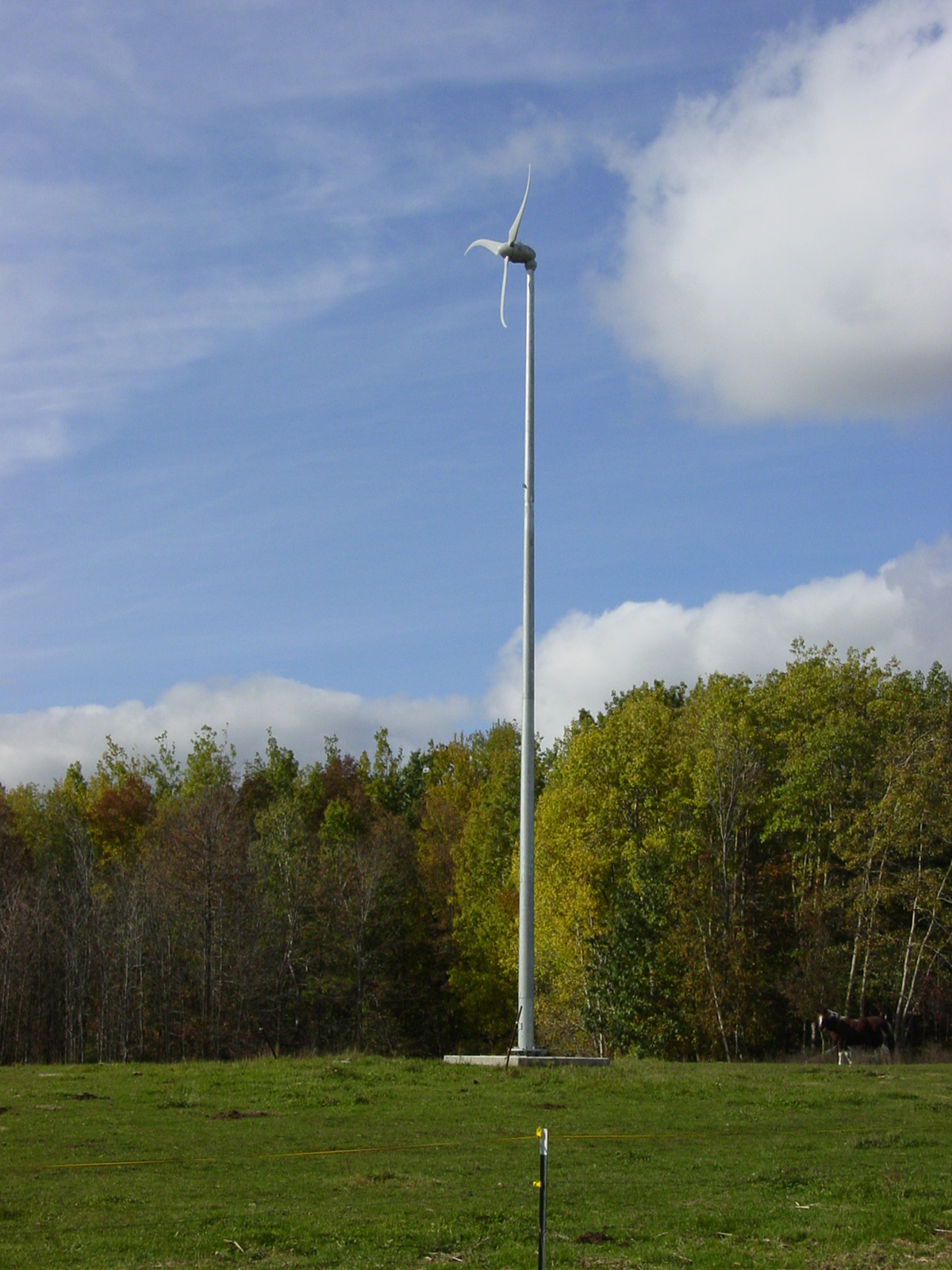

The propeller has to be placed a considerable distance in front and sometimes tilted up a small amount to ensure that the lower blade doesn't impact the tower. It is pointed into the wind with a fin on small machines and usually a servo on large machines. Since a tower produces turbulence behind it, the propeller is usually placed in front. Also, the cost of the propeller increases with the number of blades, so the optimum number of blades turns out to be three. However, fewer larger blades operate at a higher Reynolds number and are therefore more efficient. Some of the vibrations, besides wearing out the machine, are also audible. There are a number of vibrations that decrease in peak intensity as the number of blades increases. When there are three or more blades, there are always at least two blades that are not quite horizontal, so the gyroscopic inertia changes less, which makes for a smoother pivot. So, in the case of a one or two bladed propeller, as the wind changes direction it tends to start pivoting as the blade is horizontal, stop pivoting when the blade is vertical, the stop and go action creating extra wear and tear on the machine. What this means is that for each blade on a propeller of a pivoting wind generator, its gyroscopic force is at a minimum when the blade is horizontal and at a maximum when the blade is vertical.

Gyroscopic inertia is proportional to the velocity change in the masses of the rotating structure when pivoted. Smaller propellers for generators with a limited purpose are often made of lightweight fiberglass. Graphite enables propellers of a radius of about sixty meters to be built, enough to tap a few megawatts of power. One of the best construction material available in 2001 is graphite. Labor and maintenance costs increase slowly with increasing propeller size, so given all these factors, to minimize costs, wind farm propellers are basically limited by their material strength. The maximum length of a propeller is limited by both the strength and stiffness of its material. Wind intercepted by the propeller is proportional to the square of its length. For a general rule, a wind generators are practical where the average windspeed is greater than 12 mph (19 kph).įor a given survivable wind speed, the mass of a propeller (calculated from volume) is proportional to approximately the cube of its length. For every double in windspeed, the capacity of wind generators increases eightfold.
#HOME WIND GENERATORS GENERATOR#
Power output from a wind generator is equal to the cube of the windspeed. In the case of large generators, the tower height is about twice as great as the propeller radius. With small wind generators the tower height is usually at least twenty meters. This consists of an propeller perpendicular to the wind, the propeller usually having a means of stalling to reduce its wind resistance when the wind is extremely strong. A device for converting wind power to mechanical rotation with a propeller.


 0 kommentar(er)
0 kommentar(er)
